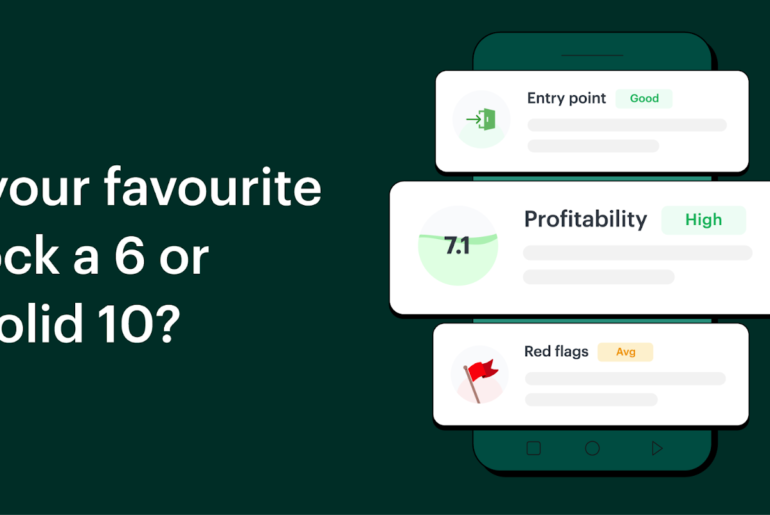Last Updated on Dec 14, 2021 by Aradhana Gotur
Folks, we are excited to start our “Tickertape Feature Series”, where we’ll pick the most-loved features of Tickertape and talk about how they can aid your stock-picking and decision-making process. So, whether you have tried your hands on ‘Tickertape’ as yet or not, our Feature articles are sure to give you reasons to make the most of the platform in your investment process
First in the series is Tickertape’s Index Pages. This article will throw light on how indices impact investment patterns and how Tickertape’s Index Pages can empower your stock investment.
Table of Contents
Overview: stock indices
Stock indices are excellent tools to measure the performance of the overall market, sector or stock. It thus allows you to compare how your favourite stock has performed as against the overall market/specific sector. Read more on indices here.
How indices reveal investment patterns?
Apart from indicating the market performance, a benchmark index also offers other valuable insights that you can apply in your investment process
1. Sector and stock comparison: Sector-specific indices allow comparison of the performance of a stock against the entire sector. For instance, Nifty Bank Index not only measures the performance of the banking sector, but also allows comparison of each constituent stock with the index. So, if SBI has generated returns higher than that of Nifty Bank, it means that the stock has outperformed the index.
2. Peer comparison: Each sector has numerous listed-companies, which makes evaluating stocks individually an impractical process. But since an index represents various underlying stocks, its metrics can be used as a standard to compare those of your favourite stocks.
In the above image, you can see that SBI has outperformed the Nifty Bank Index from Oct 2019 to Apr 2020 while HDFC Bank Ltd underperformed. However, the trend reversed starting from May 2020.
3. Measure the performance of ETFs: Indices are also used to benchmark ETFs and are supposed to closely mimic the performance of the index.
Tickertape’s Index Page shows all the ETFs tracking the particular index. Following is an image that displays all the ETFs benchmarked against Nifty100.
4. Reflection of investor sentiment: When investors are wary of a particular stock/sector, they avoid betting on it, which dampens its demand. Naturally, the price of the stock also tumbles. Conversely, if investors are positive about a stock, its demand and price rise and thus push the index higher. So, by examining a sector-specific benchmark index, you can identify the investor sentiment towards that industry. Next, you can evaluate the stock-specific trends. Tickertape’s Index Page has a ‘Constituents’ tab, which can help you here. More on this later.
5. Passive investment: Sometimes you may replicate your portfolio to match the constituent stocks of a benchmark index and the weights assigned to them. For the uninitiated, this is called passive investment and such as a portfolio generates returns similar to the index. For instance, if your portfolio replicates Nifty50 whose returns have been 10% in the last 12 months, then your investments would also generate similar returns.
The highlights of Tickertape’s index pages
Tickertape’s Index Pages is clean, neat and more importantly, a trove of useful information about the index. Following are the highlights of Tickertape’s Index Pages and how they can power your investments.
Let us first launch the Nifty Bank Index Page for our example. Go to www.tickertape.in and look for your Nifty Bank Index in the search box. As you can see, the index page has various tabs, as follows.
Overview
The ‘Overview’ tab of the index page:
- Displays a price chart for various periods
- Suggests how risky the index is and
- Offers sectoral details
Further down, the index page also displays key metrics such as PE ratio, ETFs benchmarked against the index, and its constituents too. This helps you compare the returns of an asset class with that of the index.
Constituents
What stands out in Tickertape’s Index Page is its ‘Constituents’ tab, which shows all the stocks included in building the index. You can sort the stocks in the index in two ways:
- By market cap
- By sector
In the first case, you can see basic details such as:
- The constituent stocks of the index
- Their 1D % change
- The weightage assigned to them and
- Their free float market cap
You can also find insights on the extent of influence each stock has had on the change in the index value. To learn this, look at the ‘Return attribution’ column for each stock.
In the image above, you can see that the Nifty Bank has risen 0.32% in a day. When you study the constituents and the ‘Return attribution’ column together, you can see that HDFC Bank has contributed the most in Nifty Bank’s gain while ICICI Bank Ltd has been the top laggard.
The second option to sort constituents based on the sector gives you deeper insights into the return attribution of both the underlying sector and stocks of the index. Here’s a snapshot illustrating the same.
When studying Nifty50, the return attribution column shows the % change caused by each constituent sector and stocks in the Nifty 50’s value. While IT has contributed 0.29% change in the index, the Energy sector has dragged the index by 0.10%. Isn’t that a cool feature to analyse stocks benchmarked against an index? What’s more, Tickertape also lets you download this information for your reference.
News and Corporate Actions
These tabs offer information on:
- Latest news and corporate actions (such as dividend declared) taken by individual stocks of the index
- ETFs that are benchmarked against the index
There, you have it all! Use Tickertape to experience the simplicity and power of making informed investment decisions! Let us know how you like the feature.
- Top Large Cap Funds 2025: Discover Blue Chip Performers - Mar 27, 2025
- Gilt Funds in India: Features, Meaning, and Advantages - Mar 13, 2025
- Best Index Funds in India 2025: Top Performing Mutual Funds - Mar 13, 2025





